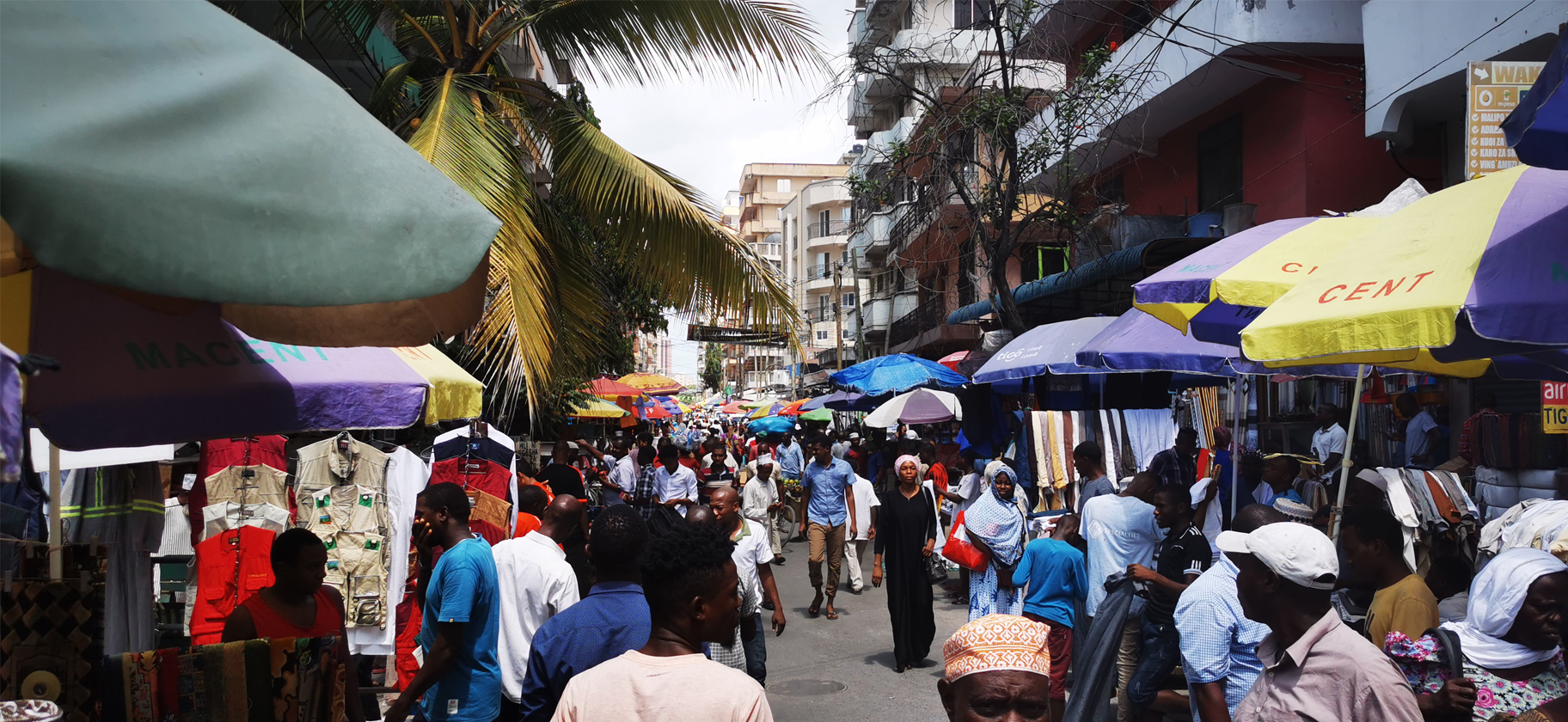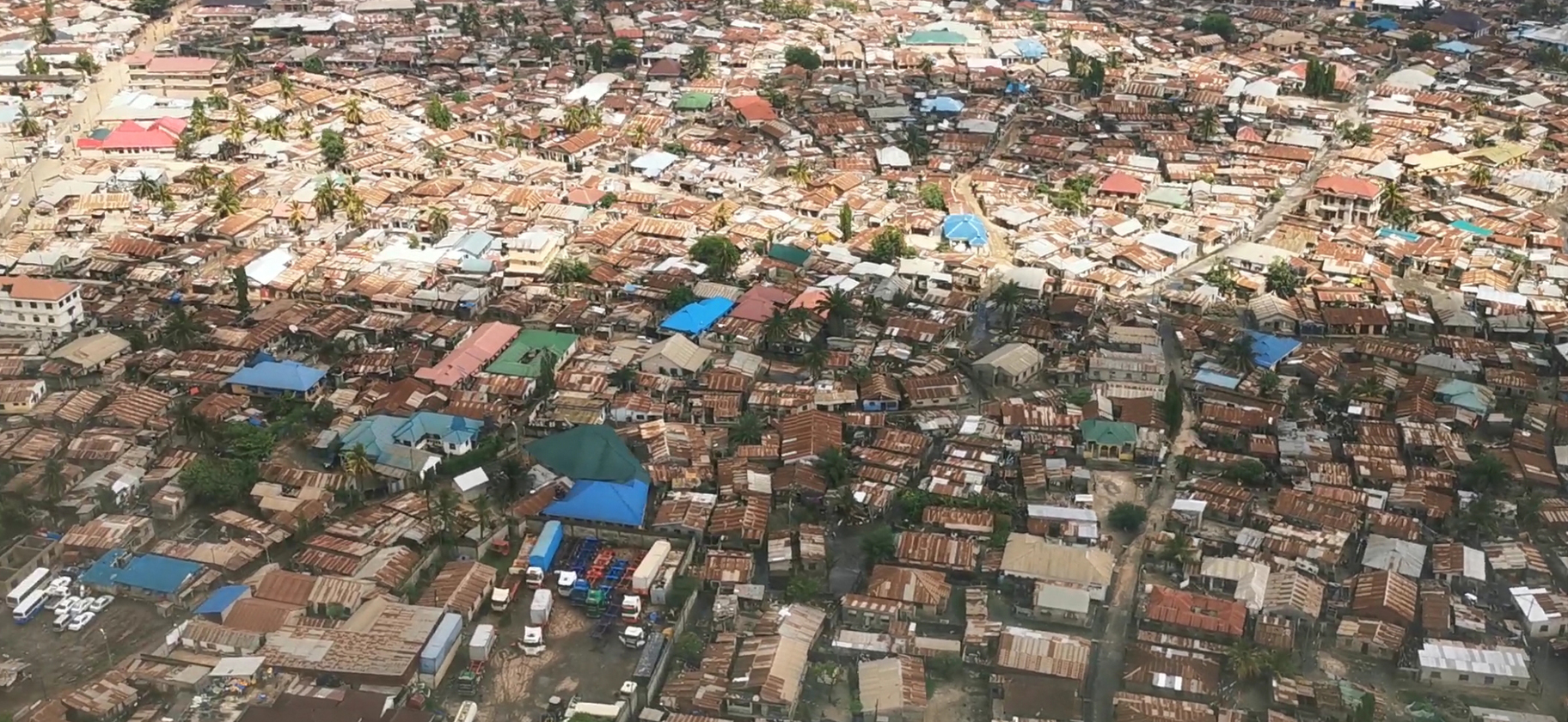Kariakoo

Visitors to Dar es Salaam who head out to areas like Oyster Bay, Masaki and Mbezi Beach would be forgiven for thinking that Tanzania’s most populous city is undeserving of its reputation as a chaotic jumble of urban sprawl. One needs only to leave the safety of these ex-pat-friendly enclaves in order to discover Dar’s true self and there is no district of the city that more encapsulates this frenzied spirit as Kariakoo.
As one heads along Julius Nyerere Road from the airport to the city centre, west of the ferry docks where boats leave for Zanzibar and just north off the main avenue lies a dozen or so streets arranged in a grid where locals converge to buy, sell, trade, and build anything that they can get their hands on. Encircled by wide avenues, somehow and for some reason, cars attempt to make the journey through the gauntlet of shop fronts, street stalls and masses of people. It is slow on foot, futile by car.
Smoke rises from street stalls selling mishkaki right next to stalls with heaps of old clothes likely discarded by a whole nation that deemed them unfashionable and sent them here on a boat in a transport container. Row upon row in the shade of a thousand and one parasols of every colour small shops selling anything they can find – jars full of lollipops, sacks of peanuts, dusty old bottles of coca-cola, an array of telephone chargers, television remote controls, and other assorted electronics as well as some bike tires. When a traffic light stops the cars along the surrounding avenues, men carrying any manner of tradable goods from bananas to hub caps to light bulbs to Hello Kitty bags will flood the street hoping to make a quick sale.
 In the middle of all of the mayhem lies the Kariakoo market along whose fringes elderly women are busy cooking large pots of rice and beans. They are surrounded by groups of men who squat on upturned plastic buckets to eat a quick and cheap meal – quite likely the only one that they will have that day. Stepping within the walls of the market and one is hit with the smell of a combination of cinnamon and cloves with dried anchovies that have stewed in the heat and with nowhere for the smell to escape to. It makes the eyes water and is not a place where one would want to idly while away the hours or read a book.
In the middle of all of the mayhem lies the Kariakoo market along whose fringes elderly women are busy cooking large pots of rice and beans. They are surrounded by groups of men who squat on upturned plastic buckets to eat a quick and cheap meal – quite likely the only one that they will have that day. Stepping within the walls of the market and one is hit with the smell of a combination of cinnamon and cloves with dried anchovies that have stewed in the heat and with nowhere for the smell to escape to. It makes the eyes water and is not a place where one would want to idly while away the hours or read a book.
Around the corner and tucked away from prying eyes is the chicken market. Plumes of feathers create a smokescreen around the stacked heaps of crowded wicker cages where the chickens are penned. There is a TV at one end of the enclosure broadcasting a local football match that has the attention of the sellers and traders that spend their day here. It is hard to breathe because of the acrid smell of shit and sewer water from whatever has been fermenting in the forty-degree heat in the moat created by piles of garbage.
Horns blaze with brazen futility with nowhere for any of the cars to go while the endless clucking of trade is shouted over the steady beat of local music blaring from speakers with the volume and the bass turned all the way up. Unknown horrors of every kind create a film of ooze and goo over the walkways and paths while stray dogs sniff and inspect each one hoping it could be discarded scraps turned into a quick snack. I don’t want to look down but for the need to know where to place my next step and I realize that not everyone here can afford shoes.
Turning another corner and the steady din of industry takes over as shops turn into small factories churning out door hinges, locks, and faucets. There are whole buildings of men working with rebar and sheet metal and anything made of iron. Sparks fly as the deafening high-pitched buzz of metal cutters cuts through the air like nails on a chalkboard and small flames emerge from a small army of men with welding torches.
Along another street, the industry persists but all of the metal has turned to wood. The steady seesaw rhythm of handsaws and adzes is hypnotic and complimented by the syncopation of driving nails into new furniture. Stools, desks, bureaus, doors and bedframes, everything one can imagine that is made of wood is all put together in a handful of rectangular concrete huts along a one-hundred-meter stretch of road.
In amongst all this chaos is the colourful mass of people that seem to pile on top of each other and make the streets hum. You can almost feel the breath of the people around you tickling your skin. It is the heat of midday but it is crowded like a night club and everyone is contributing their own musky scent to the early afternoon as pockets of sweat appear as stains on everyone’s clothing. This is no special holiday sale. It is a Tuesday and it is just as messy and chaotic as the day before just as sure as it will be tomorrow. Some have the luxury of making a trip into Kariakoo, something they can say they have experienced at least once in their life, but for many Kariakoo is their life. And it repeats, and repeats, and repeats.
